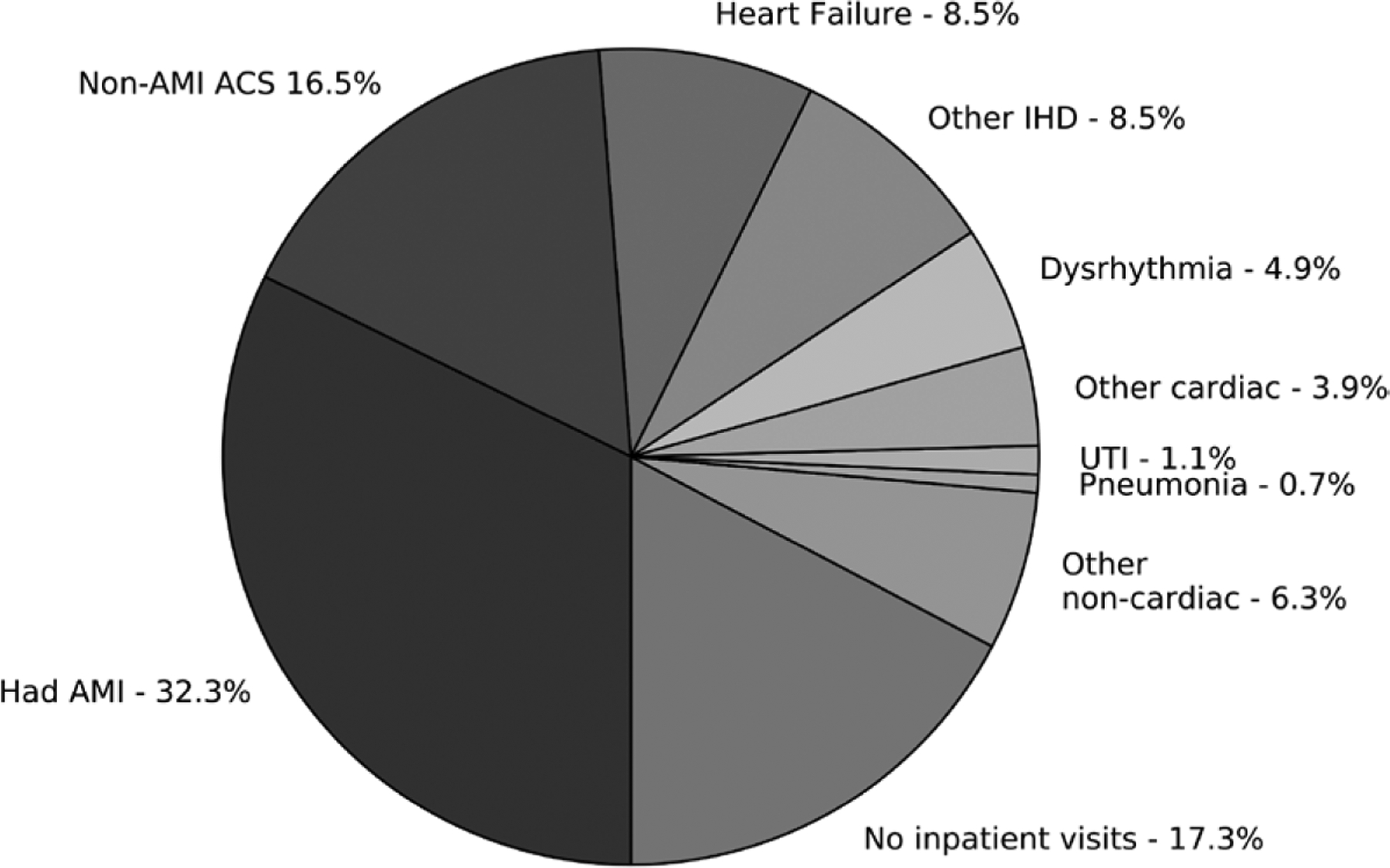Figure 1.

Claims-identified inpatient visit history among Health and Retirement Study (HRS) respondents with self-reported acute myocardial infarction (AMI). Data based on retrospective analysis of MedPAR claims from 1433 HRS respondents who reported experiencing a heart attack from 1996 to 2008. For each respondent, all claims from the previous 910 days (2.5 years) were assessed. AMI was defined by an International Classification of Diseases, Ninth Revision (ICD-9) code of 410.X1 in the first or second position on an inpatient claim for a visit with a length of stay (LOS) >3 days. Non-AMI acute coronary syndrome (ACS) was defined by ICD-9 code 411 or 413 in any position on an inpatient claim for a visit with an LOS >3 days. All other classifications were based on either the primary or secondary diagnosis, without any LOS restrictions. Respondents with multiple visits were assigned exclusively to one of the categories, with priority based first on clinical relevance (AMI before ACS, cardiac before noncardiac diagnoses) and then on the overall frequency with which the diagnoses appeared on all claims (eg, heart failure appeared more often than other ischemic heart disease [IHD]). UTI indicates urinary tract infection.
